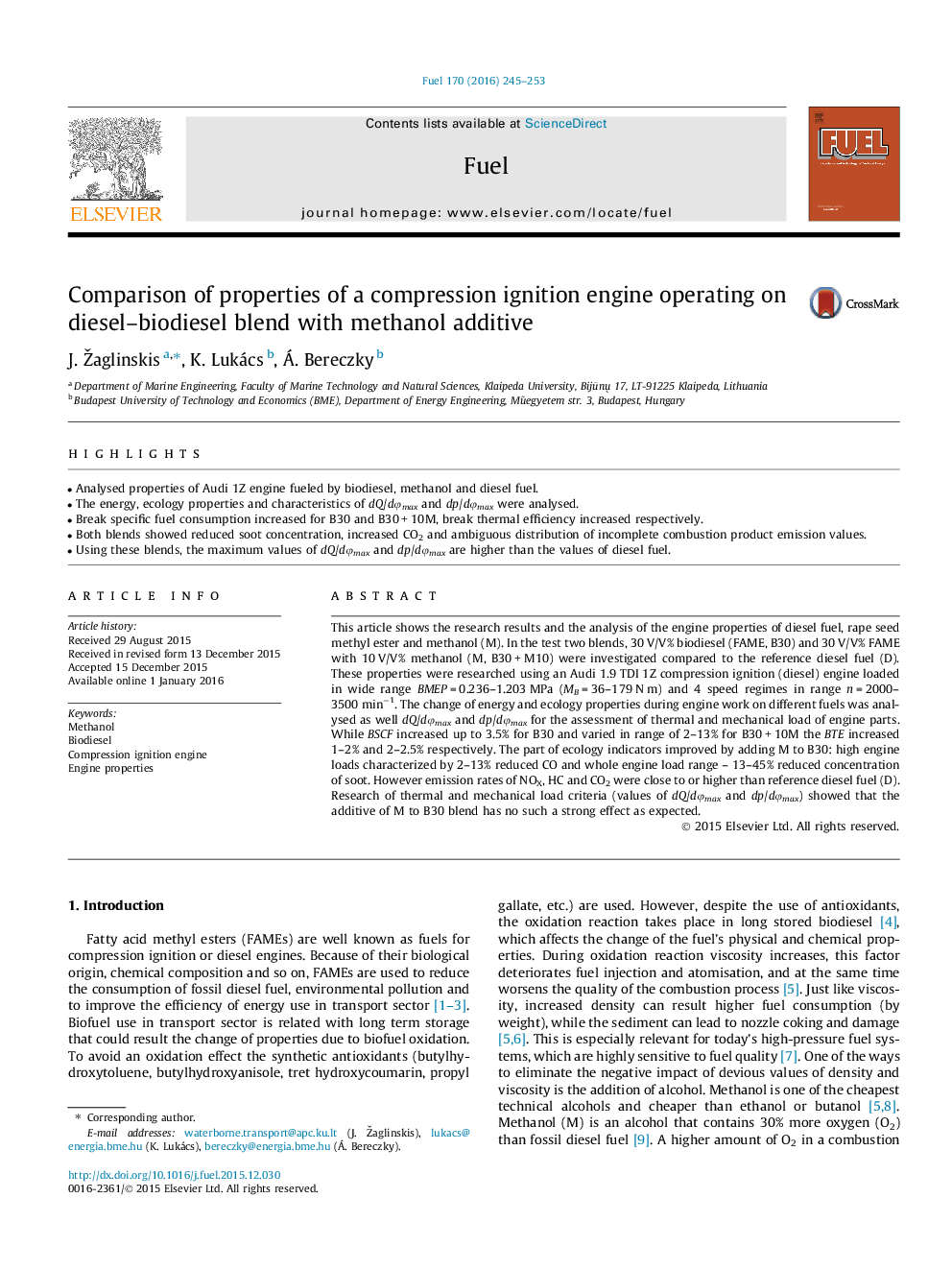| کد مقاله | کد نشریه | سال انتشار | مقاله انگلیسی | نسخه تمام متن |
|---|---|---|---|---|
| 205305 | 461103 | 2016 | 9 صفحه PDF | دانلود رایگان |
• Analysed properties of Audi 1Z engine fueled by biodiesel, methanol and diesel fuel.
• The energy, ecology properties and characteristics of dQ/dφmax and dp/dφmax were analysed.
• Break specific fuel consumption increased for B30 and B30 + 10M, break thermal efficiency increased respectively.
• Both blends showed reduced soot concentration, increased CO2 and ambiguous distribution of incomplete combustion product emission values.
• Using these blends, the maximum values of dQ/dφmax and dp/dφmax are higher than the values of diesel fuel.
This article shows the research results and the analysis of the engine properties of diesel fuel, rape seed methyl ester and methanol (M). In the test two blends, 30 V/V% biodiesel (FAME, B30) and 30 V/V% FAME with 10 V/V% methanol (M, B30 + M10) were investigated compared to the reference diesel fuel (D). These properties were researched using an Audi 1.9 TDI 1Z compression ignition (diesel) engine loaded in wide range BMEP = 0.236–1.203 MPa (MB = 36–179 N m) and 4 speed regimes in range n = 2000–3500 min−1. The change of energy and ecology properties during engine work on different fuels was analysed as well dQ/dφmax and dp/dφmax for the assessment of thermal and mechanical load of engine parts. While BSCF increased up to 3.5% for B30 and varied in range of 2–13% for B30 + 10M the BTE increased 1–2% and 2–2.5% respectively. The part of ecology indicators improved by adding M to B30: high engine loads characterized by 2–13% reduced CO and whole engine load range – 13–45% reduced concentration of soot. However emission rates of NOX, HC and CO2 were close to or higher than reference diesel fuel (D). Research of thermal and mechanical load criteria (values of dQ/dφmax and dp/dφmax) showed that the additive of M to B30 blend has no such a strong effect as expected.
Journal: Fuel - Volume 170, 15 April 2016, Pages 245–253
